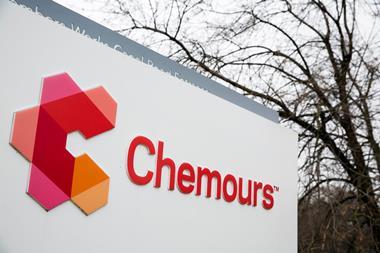US court orders firm to pay $2m in damages to man whose disease has been linked to contaminated water supply
A jury in Ohio has ordered DuPont to pay $2 million (£1.6 million) in damages to a man who claims his testicular cancer resulted from exposure to perfluorooctanoic acid (PFOA) from a DuPont plant that ended up in the local water supplies. The jury reportedly found that DuPont acted with ‘actual malice’, and additional punitive damages will be determined following more testimony that will begin in January.
The 21 December verdict represents the third ruling against DuPont in bellwether cases among the roughly 3500 personal injury lawsuits the company faces over PFOA, also known as C8. In October 2015, a jury awarded $1.6 million to a woman in West Virginia, after determining that PFOA contaminating her drinking water contributed to her kidney cancer. In July, a jury awarded $5.6 million in compensatory and punitive damages to another man with testicular cancer. That jury also ruled the company had acted with malice.
Chemours, DuPont’s spun-off performance chemicals unit, is expected to cover the costs of these lawsuits. It has said it will continue to ‘vigorously’ fight this C8 litigation.
‘Additional trials are expected, and they will be defended on an individual basis under the facts and circumstances of each case,’ stated Chemours spokeswoman Cynthia Salitsky. She said this type of litigation typically takes many years, and interim results do not predict the final outcome of cases.
The company has said that DuPont acted reasonably and responsibly with regard to C8, and that it never believed that the ‘extremely low levels of C8 that reached the community’ would cause any harm. Further, Chemours argues that federal and state environmental authorities had never established regulations on the use, handling, emissions or disposal of C8 during the time at issue in these lawsuits.
‘This is the beginning,’ says Richard Clapp, an environmental epidemiologist and former chair of US campaign group Greater Boston Physicians for Social Responsibility. He notes that there are many more lawsuits to come, and each may not result in the same verdict.
These cases may have broad implications beyond DuPont, to other manufacturers like 3M, according to Clapp. ‘This is a pretty widespread problem,’ he tells Chemistry World. Clapp points to recent research indicating that drinking water systems serving at least six million Americans have shown levels of C8 and other similar chemicals that are higher than the health advisory levels set by the US Environmental Protection Agency in 2016.

















No comments yet